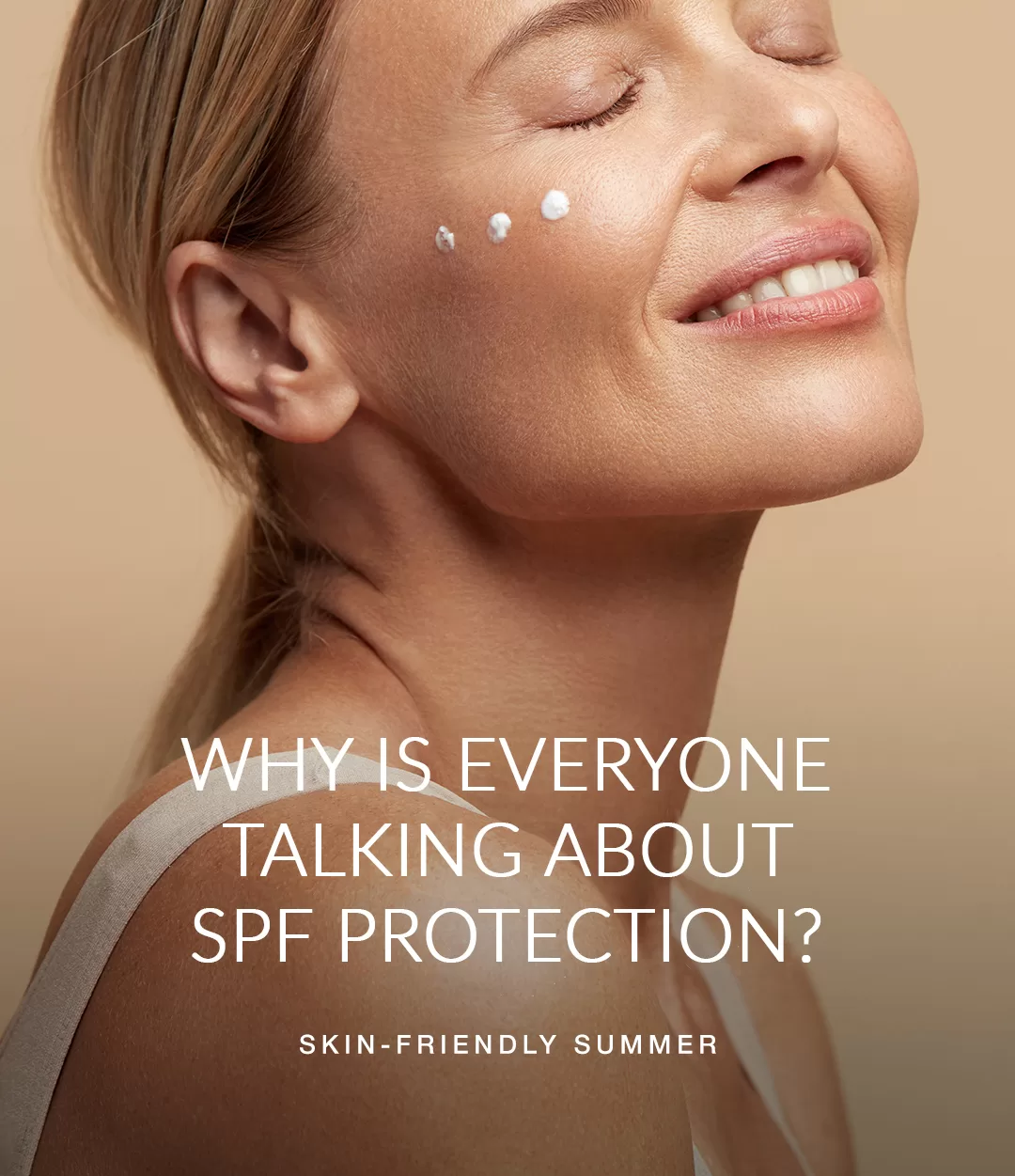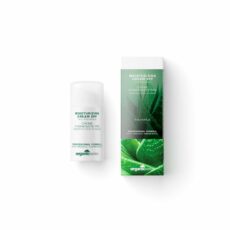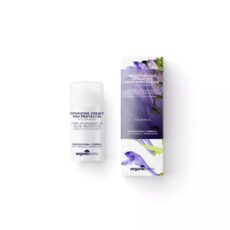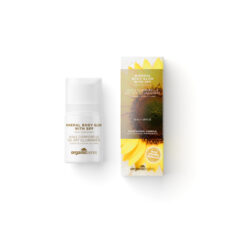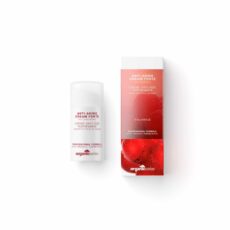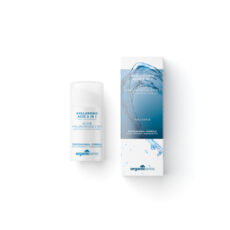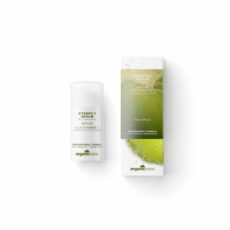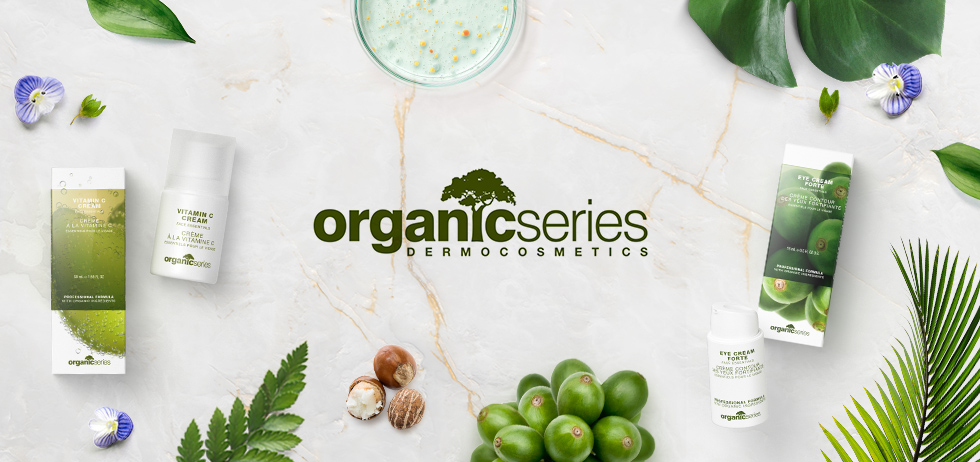Best moisturiser with SPF – introduction
We all know how important it is to protect our skin from the damaging effects of the sun, but choosing the best moisturiser with SPF can be overwhelming. With so many options available on the market, it can be challenging to know what to look for. In this article, we’ll break down the nine steps to finding the best moisturiser with SPF. From understanding the importance of broad-spectrum protection to choosing the right formula for your skin type, we’ll help you find the best sunscreen to keep your skin protected, healthy and radiant all year round.
Understanding the importance of best moisturiser with SPF in your skincare routine
One of the best ways to incorporate SPF into your skincare routine is by using the best moisturiser with SPF. A good moisturizer can not only hydrate and soothe your skin, but it can also protect it from the sun’s harmful rays. When choosing a moisturizer with SPF, it’s important to look for one that has a broad-spectrum rating of at least 30. This means that it will effectively protect your skin from both UVA and UVB rays.
Here are nine steps to finding the perfect sunscreen:
1. Look for broad-spectrum protection. This will protect from both UVA and UVB rays.
2. Choose an SPF of at least 30. This will protect your skin from up to 97% of the sun’s UVB rays.
3. Check the ingredients list. Look for zinc oxide and titanium dioxide, which are physical blockers that are less likely to cause skin irritation.
4. Avoid products with high alcohol content. Alcohol can dry out your skin and make it more susceptible to UV damage.
5. Choose a non-greasy formula. You’ll want a moisturizer that won’t leave your skin looking oily or shiny.
6. Consider your skin type. If you have oily or acne-prone skin, look for an oil-free or non-comedogenic formula.
7. Read reviews online. See what other people are saying about the product and whether it’s effective at blocking UV rays.
8. Apply it generously. You should aim to use about a quarter-sized amount for your face.
9. Reapply regularly. Sunscreen should be reapplied every 2 hours or after sweating or swimming.
Overall, using a moisturiser with SPF is one of the easiest ways to protect your skin from sun damage. By choosing a high-quality product and following the steps outlined above, you can keep your skin looking and feeling healthy for years to come. So, don’t forget to incorporate SPF into your daily skincare routine and reap the benefits of healthy and youthful-looking skin.
Key ingredients to look for in best moisturisers with SPF protection

First and foremost, you’ll want to make sure the SPF is broad-spectrum. This means it protects against both UVA and UVB rays, which can cause premature ageing and skin cancer. Look for a minimum SPF of 30 for best results.
Next, consider the moisturising ingredients. Look for products that contain hyaluronic acid, glycerin, or ceramides, as these ingredients help to lock in moisture and keep skin hydrated. You may also want to choose a product with antioxidants such as Vitamin C or Vitamin E, which can help to repair and protect the skin from environmental stressors.
For those with sensitive skin, it’s important to avoid moisturisers with fragrances or harsh chemicals. Instead, opt for products that use physical sunscreens such as zinc oxide or titanium dioxide, which sit on top of the skin and reflect the sun’s rays.
In addition to choosing the best moisturiser with SPF, it’s also important to apply it correctly. Follow these nine steps for the perfect sunscreen application:
1. Apply 30 minutes before sun exposure.
2. Use enough product. Aim for a quarter-sized amount for your face and a shot glass-sized amount for your body.
3. Reapply every two hours or immediately after swimming or sweating.
4. Don’t forget to apply to areas often missed, such as the tops of your feet, ears, and neck.
5. Use a lip balm with SPF.
6. Don’t rely on makeup with SPF as your sole protection. Use a dedicated sunscreen as well.
7. Consider clothing with SPF protection if you’ll be in the sun for an extended period.
8. Seek shade when possible, especially during peak hours between 10 am and 2 pm.
9. Remember, even on cloudy days, up to 80% of the sun’s harmful rays can penetrate your skin.
By choosing the best moisturiser with SPF that contains the right ingredients and following proper application techniques, you can protect your skin from sun damage and maintain a healthy, glowing complexion.
Finding the best moisturiser with SPF for your skin type
The best moisturiser with SPF is one that suits your skin type. If you have oily skin, you should look for a lightweight, oil-free moisturiser with SPF that won’t clog your pores. If you have dry skin, you should choose a moisturiser with SPF that contains hydrating ingredients like hyaluronic acid. If you have sensitive skin, you should opt for a mineral sunscreen that is free of fragrances and other irritants.
Identify Your Skin Type: Understanding your skin type is crucial as it dictates the type of moisturizer your skin needs. If you have oily skin, you’ll want a lightweight, oil-free formula that won’t clog pores. Dry skin requires a richer, more emollient moisturizer to provide intense hydration. Combination skin may benefit from a moisturizer that balances oil production while providing hydration to dry areas. Sensitive skin requires gentle, fragrance-free formulas to prevent irritation.
Consider SPF Level: Sun protection factor (SPF) indicates how well a sunscreen protects against UVB rays, which cause sunburn and contribute to skin cancer. Dermatologists typically recommend using a broad-spectrum sunscreen with an SPF of at least 30 for daily use. However, individuals with fair or sensitive skin may opt for a higher SPF for added protection.
Opt for Broad-Spectrum Protection: While SPF measures protection against UVB rays, it’s essential to choose a moisturizer that offers broad-spectrum protection. UVA rays penetrate deeper into the skin, leading to premature aging and increasing the risk of skin cancer. Broad-spectrum sunscreen shields against both UVA and UVB rays, providing comprehensive protection.
Check for Non-Comedogenic Formulas: If you have acne-prone or oily skin, it’s crucial to select a non-comedogenic moisturizer with SPF. Non-comedogenic products are formulated to prevent clogged pores and breakouts, making them suitable for individuals prone to acne. These formulas are lightweight and won’t exacerbate oiliness or acne.
Look for Additional Benefits: Many moisturizers with SPF contain additional skincare ingredients that offer various benefits. Antioxidants like vitamin C and E help neutralize free radicals, preventing oxidative stress and premature aging. Hyaluronic acid attracts and retains moisture, keeping the skin hydrated and plump. Niacinamide improves skin texture, reduces redness, and regulates oil production.
Read Reviews and Testimonials: Before purchasing a moisturizer with SPF, research online reviews and testimonials from other users. Pay attention to feedback regarding texture, absorption, effectiveness in sun protection, and compatibility with different skin types. Real-life experiences can provide valuable insights into the product’s performance and potential drawbacks.
Patch Test New Products: To avoid adverse reactions or skin sensitivities, conduct a patch test before applying a new moisturizer with SPF to your entire face. Apply a small amount of the product to a discreet area of skin, such as the inner forearm or behind the ear, and monitor for any signs of irritation, redness, or itching. If no adverse reactions occur after 24 hours, the product is likely safe to use.
Assess Longevity and Reapplication: Consider how long the moisturizer’s SPF protection lasts and whether it requires frequent reapplication. If you spend extended periods outdoors or engage in activities that cause sweating or water exposure, opt for a long-lasting formula or be prepared to reapply sunscreen every two hours, as recommended by dermatologists.
Evaluate Texture and Absorption: The texture and absorption of a moisturizer with SPF play a significant role in user experience. Choose a formula that feels comfortable on your skin, absorbs quickly without leaving a greasy or sticky residue, and layers well under makeup or other skincare products. A lightweight, non-greasy texture ensures that the product won’t feel heavy or occlusive on the skin, making it suitable for daily use.
Factor in Budget and Accessibility: Determine your budget and prioritize skincare products that offer value for money without compromising quality or efficacy. While some moisturizers with SPF may come with a higher price tag due to premium ingredients or brand reputation, there are affordable options available that provide excellent sun protection and skincare benefits. Consider factors such as packaging size, product longevity, and accessibility when making your purchase decision.
Consult with a Dermatologist: If you’re uncertain about which moisturizer with SPF is best suited for your skin type or if you have specific skin concerns, seek guidance from a dermatologist or skincare professional. A dermatologist can assess your skin condition, provide personalized recommendations, and address any questions or concerns you may have regarding sun protection and skincare. Additionally, they can recommend prescription-strength products or treatments for more severe skin issues that require medical intervention.
By following these detailed steps, you can navigate the process of finding the best moisturizer with SPF tailored to your skin’s unique needs, ensuring optimal protection, hydration, and skincare benefits.
How to properly apply best moisturiser with SPF for optimal sun protection
First, one should choose the best moisturiser with SPF for their skin type and needs. Most skincare brands offer moisturisers with SPF that cater to various skin types such as dry, oily, or sensitive skin. It is important to choose a moisturiser that is compatible with your skin and offers adequate protection against the sun.
Secondly, before applying the moisturiser with SPF, make sure to cleanse the face to remove any oil and dirt that may hinder the absorption of the sunscreen. One should then allow the skin to dry completely before applying the moisturiser.
Thirdly, take a small amount of moisturiser with SPF onto your fingers and apply it to the face. Start by applying it to the nose, then cheeks, forehead, chin, and neck area. Do not forget to apply the moisturiser to the ears as well.
Fourthly, use gentle circular motions to massage the moisturiser into your skin. Make sure to blend it evenly to avoid any uneven skin tone.
Fifth, give the moisturiser with SPF time to dry onto your skin before applying makeup or stepping outside. The recommended time is 15 to 20 minutes to allow the skin to fully absorb the product.
Sixth, if spending an extended period in the sun, re-apply the best moisturiser with SPF every two hours. This helps to maintain the protective barrier on the skin and prevent sun damage.
Seventh, when applying best moisturiser with SPF, take special care around the eyes. Use a separate cream with SPF specifically formulated for the delicate eye area to prevent any irritation.
Eighth, choose a moisturiser with an SPF of 30 or higher for optimal sun protection. Remember, the higher the SPF, the better the protection.
Lastly, ensure that you apply best moisturiser with SPF every day, regardless of how sunny it may appear outside. UV rays can still penetrate through clouds, and therefore, it is important to keep the skin protected against the sun whenever we step outside.
Best moisturiser with SPF – conclusion
In conclusion, finding the best moisturiser with SPF requires considering factors such as skin type, sun protection level, and additional skincare benefits. By following the nine steps outlined in this article, you can ensure that you choose a sunscreen that not only protects your skin from the harmful effects of UV rays but also nourishes and enhances its overall health and appearance. Remember to always reapply sunscreen throughout the day and to practice other sun-safe habits, such as wearing protective clothing and seeking shade during peak sunlight hours. With the right sunscreen regimen, you can enjoy radiant, healthy skin for years to come.
Expert recommendation for best moisturiser with SPF
Organic Series Best Moisturiser with SPF
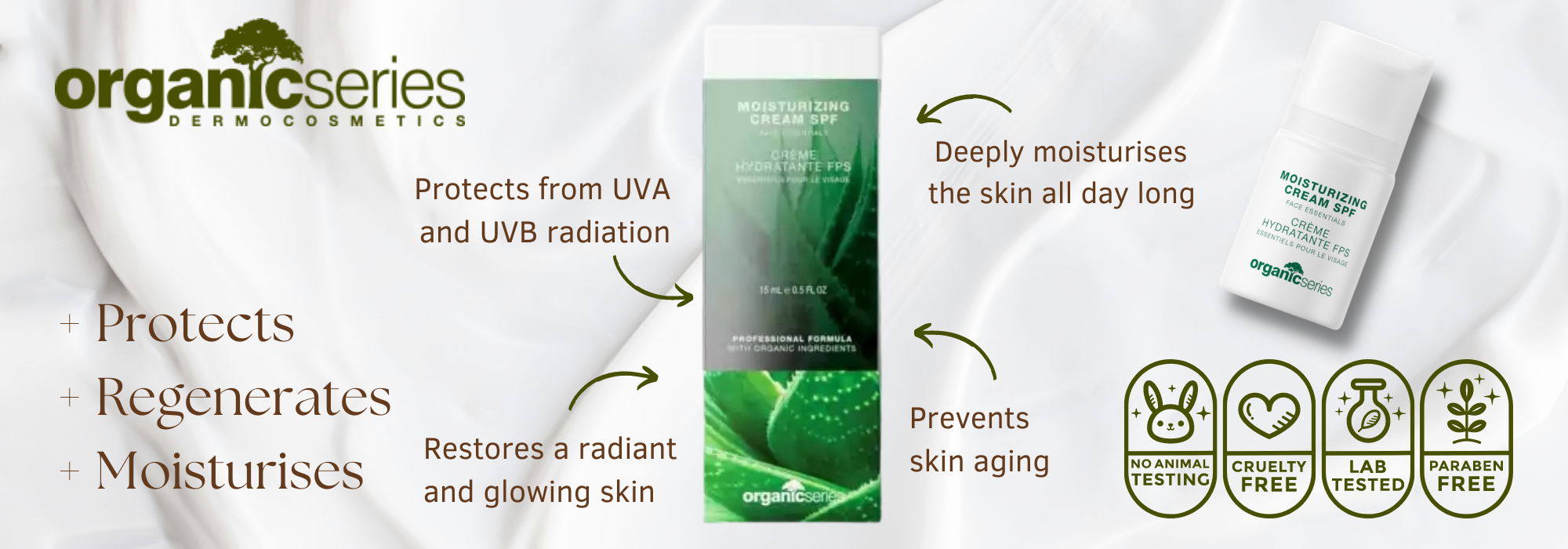
More inspiration
Follow Organic Series UK on instagram and facebook for more inspiration, expert tips and special discount codes!
Best Moisturiser with SPF By Organic Series
-
Face Moisturiser with Sunscreen SPF20 | Moisturising Cream SPF20 By Organic Series | 15ml, 50ml, 200ml
From £ 12.00Rated 4.89 out of 509 reviews -
Face Moisturiser with Sunscreen SPF40 | Moisturising Cream SPF High Protection By Organic Series | 15ml, 50ml
From £ 12.00Rated 4.67 out of 506 reviews -
-
Organic Hyaluronic Acid 2-in-1 | By Organic Series | 50ml, 200ml
From £ 52.00Rated 5.00 out of 503 reviews -
Organic Vitamin C Serum 10% | By Organic Series | 15 ml, 50 ml, 200 ml
From £ 12.00Rated 5.00 out of 505 reviews

Maria
Cosmetic Chemist
Maria
All Author Posts
